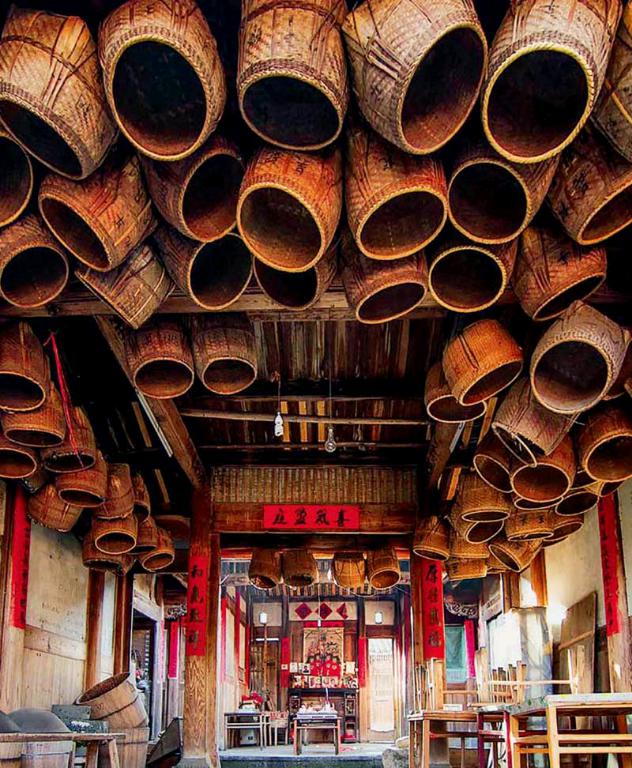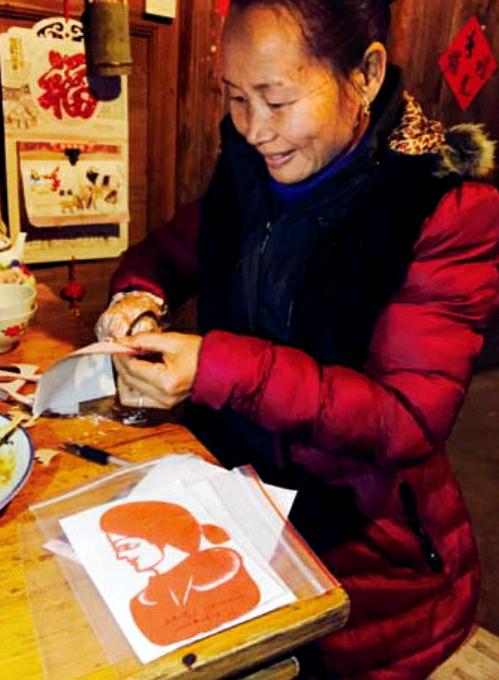Village Voices
2016-05-30byWangHongguang
by+Wang+Hongguang
To develop tourism, the local gov- ernments of many Chinese villages invite renowned architects and designers to guide village renovation and development. Although the resulting buildings and services cater to urban residents, they have no connection to the locals.
Peitian, a village in Longyan City, Fujian Province, adopted a new model. With an area of only a half square kilometer, Peitian has attracted a heavy tourist flow with its dwellings characterized as “nine halls and 18 wells” as well as an intact architectural complex dating to the Ming (1368-1644) and Qing (1644-1911) dynasties.
New Village
On November 11, 2015, the social enterprise Gengxin Village Co-creation invited Peitian villagers to a meeting to discuss tourism development in their home- town. At the meeting, villagers shared their opinions, which led to Gengxin proposing the concept of co-creation.
“Villagers who live in and build the settlement are the inheritors of local culture and craftsmanship,” remarks Che Mingyang, founder of Gengxin, who graduated from the Business and Economics School of Hong Kong University and attended the Design Thinking course at Stanford University. “If we just provide money but do not properly stimulate their creativity, they will be excluded from village growth and fail to integrate their lifestyles with the future of their homeland. Its not fair.”
Paper Cutting Art B&B was constructed based on this concept. The designers had the farming tools and wood taken from the gate and the inhabitants paper cuttings framed and hung on the walls. A timehonored table was placed in the center of the hall, decorated with a lampshade made from a chicken coop. The makeover injected the wooden house with both historical flavor and modern taste. Cao Linfeng, the woman living there, was selected as head of Rongxi Residence, once a womens school and now a visitors center to introduce local history and culture to tourists.
Wu Yachun, Caos husband, oversees the familys bamboo grove. Harvesting bamboo shoots is a hard work, but the bamboo forest scenery along the way with gurgling brooks and flourishing mushroom is breathtaking to urbanites. So, the Gengxin group helped Wu develop a bamboo sprouts digging summer camp project. Their son Wu Jinliang uses a smartphone to handle reservations, communicate with guests and designers, plan activities and collect feedback. The family also sells homemade ginger sugar, rice wine and vinegar as souvenirs.
Ecological Crowdfunding
Gengxin group also helped villagers improve the quality of family hotels, souvenirs and foods to ensure they meet the demands of tourists. Some members of Gengxin stayed with villagers for a long time to explore local traditional culture, protect ancient architecture and organize campaigns to blend urban designs and service with countryside ambience.

After Gengxins introduction of crowdfunding to Peitian, more scholars and organizations from Beijing, Shanghai and Hong Kong began joining the construction of the village. “In Peitian Village, outside professionals are not designers – only service providers,” explains Li Shuxiang, senior engineer at the School of Architecture of Tsinghua University. “By serving local villagers, the Gengxin team can see the strengths of rural ecological economy in terms of market demand.” In a new-type rural household such as Paper Cutting Art B&B, traditional life and high-quality service coexist and complement each other. With the expanding platform Gengxin is creating, more scholars and organizations will join in the development of Peitian Village.

